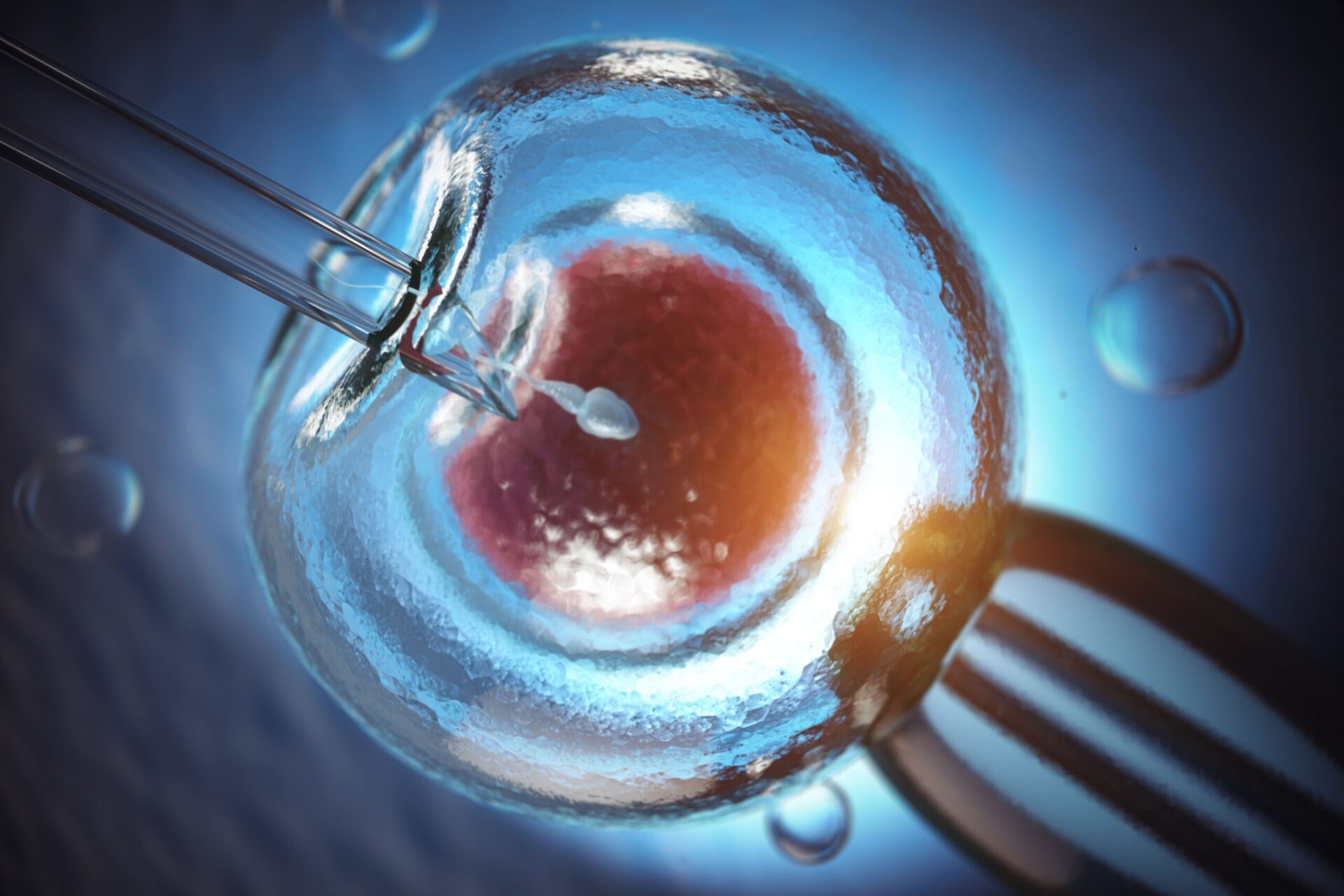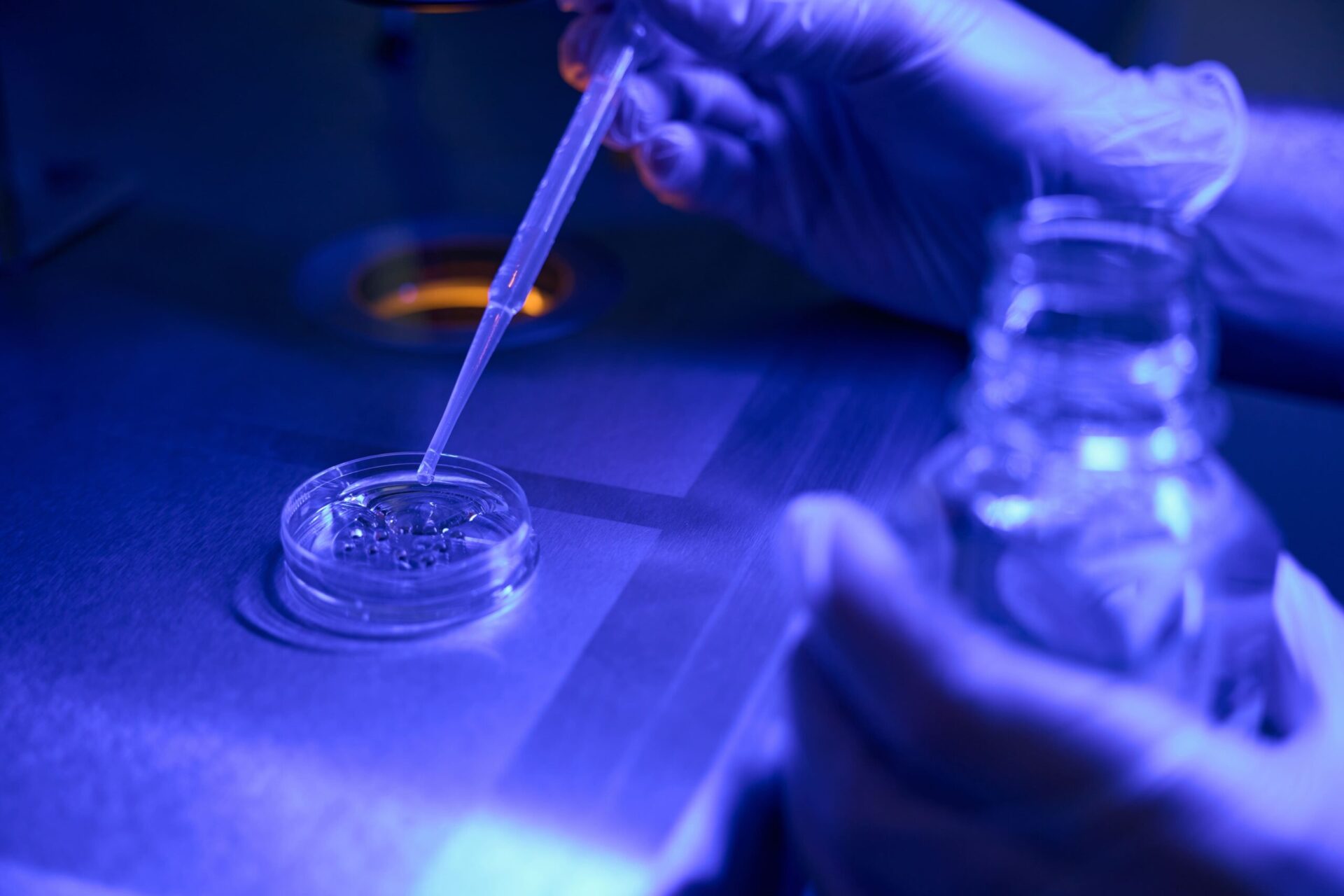WHAT IS SPERM CAPACITATION?
Sperm capacitation is defined as the final stage that allows spermatozoa released in the ejaculate to acquire the capacity to fertilize the egg.
Naturally, this process occurs inside the female reproductive tract, but in order to carry out an assisted reproduction technique, it is necessary to imitate these conditions in vitro.
The sperm capacitation process consists of separating the seminal plasma from the spermatozoa, while the spermatozoa are grouped according to their motility and morphology and incubated with culture media that mimic in vivo conditions.
SPERM CAPACITATION TECHNIQUES
In the laboratory there are different ways to carry out the sperm capacitation process. At Phi Fertility, we use different methods depending on the characteristics of the semen. The main processes used are:
- Density gradients: various media from higher to lower density are placed in a laboratory tube and the semen sample is placed on top. Then, it is centrifuged and the optimal spermatozoa will be able to cross these barriers and reach the bottom of the tube where they will be collected later to be used in assisted reproduction techniques, since they are the spermatozoa with progressive motility and fertilizing capacity.
- Swim-up: for this technique, the seminal sample is centrifuged with specific culture medium. This concentrates all the cells of the ejaculate at the bottom of the tube and eliminates the seminal plasma. Next, fresh culture medium is added and incubated with the tube tilted for 30 to 60 minutes. With this technique good quality sperm will be able to swim upwards and subsequently be retrieved for fertilization.
SPECIAL TRAINING TECHNIQUES
There are several techniques for semen capacitation, as we have already discussed above, the most common are the ones mentioned above. However, at Phi Fertility we use a third training technique that is indicated for semen with high double-stranded DNA fragmentation that results in internal sperm damage that is not visible to the naked eye and leads to implantation failure, repeat miscarriages and slow embryo kinetics.
- Microfluidic technique: consists of a device with several inlet and outlet wells. In the inlet wells we will place the semen sample with specific culture medium and incubate for 20 minutes. After this time we will collect the spermatozoa that have arrived in the exit wells.
This device is equipped with microfluidic channels in which spermatozoa will be selected according to the best morphology, best motility and low presence of DNA fragmentation.
REM (MOTILE SPERM COUNT) AND SEMEN QUALITY
When we have the semen capacitated we proceed to check how the sample has been left. For this purpose, we observe under the microscope a drop of the sample obtained. We will look at the number of spermatozoa recovered and with a rectilinear motility per milliliter of ejaculated semen. This is what is known as REM (motile sperm count).
On the other hand, with sperm capacitation techniques we manage to improve the seminal sample, since we discard immotile spermatozoa and any type of cells other than spermatozoa, whether epithelial cells, leukocytes, etc. that can interfere negatively in the results of reproduction techniques.
Likewise, we will obtain a sample with better motility, morphology and less DNA fragmentation.
SPERM TRAINING AND REPRODUCTIVE TECHNIQUES
Finally, sperm capacitation is not only used for direct use in assisted reproductive techniques such as AI or IVF, but is also used as a diagnostic test for male infertility.
Normally a capacitated semen analysis is performed by swim-up and the result obtained will give us an indicative idea of the assisted reproduction technique that we can use in the future:
- REM greater than 5 mill/ml would be indicated for artificial insemination.
- EMR between 1 and 3 mill/ml would be indicated for conventional IVF.
- EMR less than 1 mill/ml would be indicated for ICSI.





